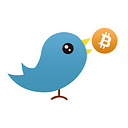NFTs Could Bring New Crowds Into The DeFi World, But They Are Not There Yet
DeFi summer was marked by an explosion of investment as the crypto community scrambled towards new yield farming opportunities which followed years of innovation which had been bubbling beneath the surface. The rate of experimentation brought on by the DeFi craze has resurfaced another space: non-fungible tokens or NFTs.
Non-fungible tokens are unique digital assets which are non-interchangeable and can be used to represent an endless possibility of things: items, tickets, subscriptions, art or even gaming characters. While currencies like Bitcoin are fungible — there is no telling one Bitcoin from the next — NFTs are distinct and individual.
While NFTs are currently receiving more attention than usual, they aren’t actually new. They have been around since the early 2010s with one of their earliest incarnations being a platform called Counterparty in 2014. Counterparty was a distributed, open-source internet protocol built on the Bitcoin blockchain which allowed users to create new assets. Soon rare pepes — drawings of popular meme character pepe the frog — were being sold on Ebay and even at live auctions in New York.
PC: pepe the frog meme character
The Counterparty innovation opened the door for a wider array of assets being issued on blockchains. The first Ethereum-based NFT project was CryptoPunks where the average sale price for one of the 10,000 unique characters over the past 12 months stands at $1,040. Later, the first NFT game, Cryptokitties, took off allowing players to trade and breed tokenized cartoon crypto cats. The most expensive CryptoKitty, Dragon, sold for 600 ETH or $170,000.
The collectables world quickly picked up on the NFT world as the tokens allowed individuals to prove ownership of digital assets. Virtual trading cards, customizable characters and art pieces quickly became the norm in the NFT realm.
As DeFi heated up over the summer members of the crypto community began to wonder how NFTs could be incorporated into the world of lending, borrowing and — of course — yield.
One project that emerged was NFTfi.com, a platform allowing NFT holders to use their assets as collateral for ETH loans. CEO and founder of NFTfi.com Stephen Young noted that his site helped increase the utility of NFTs, which today is still a relatively illiquid market.
“I think we’ve seen a really tiny sliver of what it’s going to be — with all of what has been built in DeFi, it makes these NFTs much more useful,” Young said. “The fact you can take out a loan against your Cryptokitty on NFTfi and put it in a Uniswap pool and go earn yield on that and then basically take that yield to pay back your loan that is a super useful thing to be able to do.”
The integration of NFTs with DeFi also carries the possibility of transferring value from the gaming world into the physical world. Axie Infinity has become a popular choice for those looking to turn a profit using their gaming skills. In Axie, users collect, battle and raise fantasy creatures called Axies. Players can earn the game’s utility token and sell it on Uniswap for cryptocurrencies like ETH. From there, they can hold onto the crypto or exchange it for fiat.
“There’s more and more games working on that, so instead of saying how do we get people to pay us to play our game instead what they’re trying to figure out is how do we allow people to earn money by playing our game and then they’ll take a small percentage of value earned by those people,” Young said.
The crossover between NFTs and the physical world doesn’t stop there. The Australian Postal Service launched a project called Crypto Stamp which attaches to physical stamps private keys containing a small amount of ETH along with a digital version of the physical stamp. In addition to tying a digital asset to the physical world, the project also pulled an existing community of collectors into crypto.
Onboarding those outside of the crypto community is a suggested strength of NFTs. Digital artists attracted to the ability to protect ownership rights of their work through tokenization is another example of how NFTs can pull in a wider audience for crypto.
Digital art is tricky because it can be screenshotted and distributed with no way to track back to the original or its creator. When digital art is tokenized, creators can prove their ownership and its near impossible for the original to get lost in the shuffle.
“I think the big moments for NFTs is going to be bringing in more of the mass audience as opposed to converting the crypto audience,” Young said. “It’s much easier to understand collecting especially for gamers. They understand skins they understand in game items and they know there’s a value to them so I think we’ll probably pull in a lot of mainstream people either through gaming or through collectibles.”
Already, digital artists have begun building virtual museums in NFT-friendly worlds like Decentraland where they can display their NFTs. NFT minting services like Mintbase and Mintable have already caught on to the trend, allowing people with no technical knowledge to create their own NFTs. The expansion of NFT awareness and accessibility means the space could see increased use cases with tickets or even financial contracts being represented by unique tokens.
“[NFTs] brings property rights to the digital domain so you can have digital property rights in virtual worlds,” Young said. “I think the implications of that and what people can build once they can actually own a piece of a virtual world is going to be mind boggling.”
Despite the progress, the space still seems far off from roping in a wider audience. Both average trading volume and the number of transactions declined over the course of 2019, data from nonfungible.com shows.
By Emily Mason
